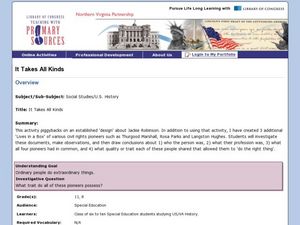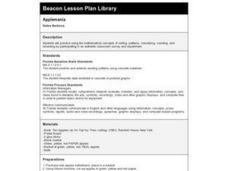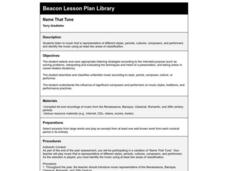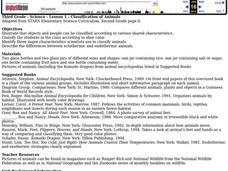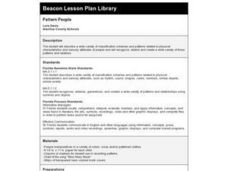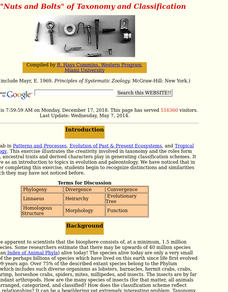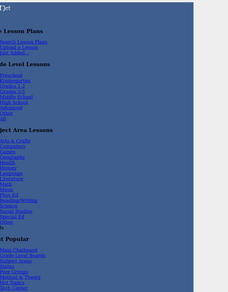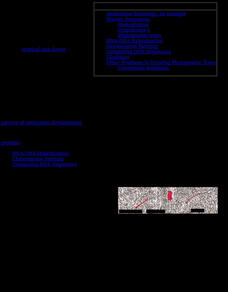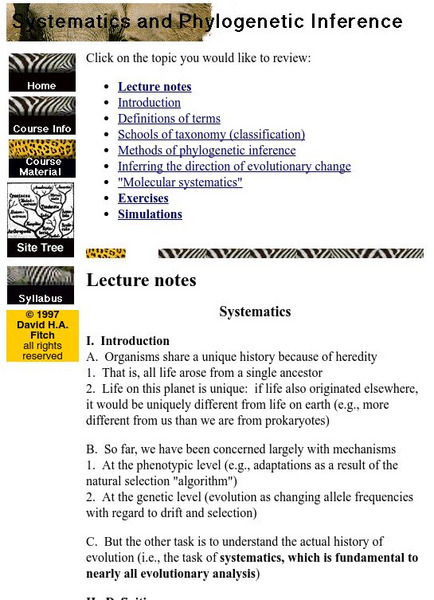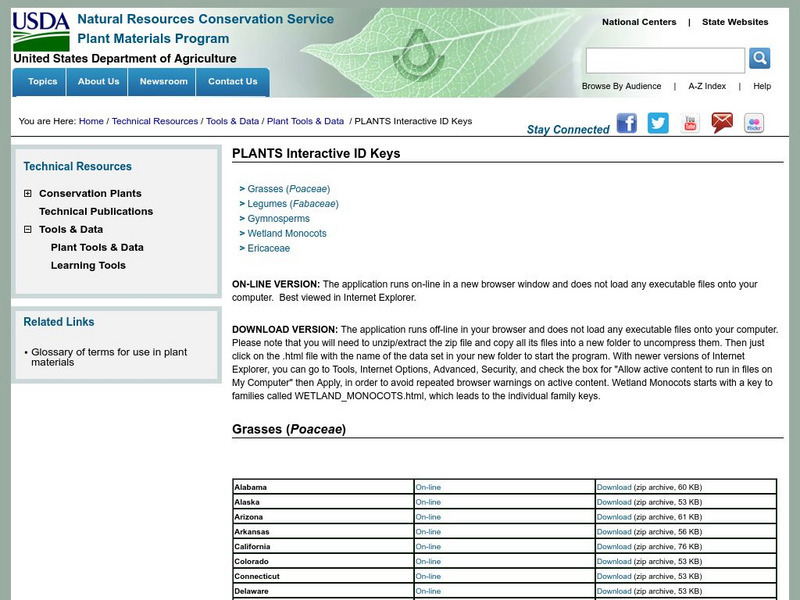Curated OER
Got the Whole World in My Hands
Students review factors that threaten survival of different species. this lesson is part of a multi-segmented unit on animal survival.
Curated OER
Diversity of Life
Students explore the diversity of life forms and the role that interdependency plays in our world through a mult-segmented unit. This segment introduces the unit.
Curated OER
Lords of the Night
Second graders explore bird classification, specifically owls. They dissect their own owl pellet and explain the predetor and prey relationship.
Curated OER
It Takes All Kinds!
Students view video clips and observe similarities and differences between animals. They sort animals into groups for a zoo. They make a graph of their observations and review scientific classifications.
Curated OER
Physical Difference and Classification
Learners use a microscope and observation skills to compare and contrast several physical properties and develop a classification system.
Curated OER
Applemania
First graders read "Ten Apples Up On Top!" and view real apples in a basket. They taste different kinds of apples and describe the tastes: sour, sweet, etc. They graph everyone's favorite apple. They interpret the graph and draw their...
Curated OER
Name That Tune
Fourth graders listen to different types of music, then categorize them into two different areas of classification.
Curated OER
Animals Galore
Third graders use structural characteristics to sort and classify animals into groups.
Curated OER
Classification of Animals
Third graders practice classiyfying items and identify three major characteristics scientists use to classify animals. They describe the differences between ectothermic and endothermic animals.
Curated OER
Sink or Float?
Students predict and explore to discover which objects sink or float in fresh and salt water, predict how salt affect objects, write predictions on T chart, discuss difference between man-made and natural waters, and graph results.
Curated OER
Pattern People
Students describe a wide variety of classification schemes and patterns related to physical characteristics and sensory attributes of people. They recognize, extend and create a wide variety of those patterns and relations.
Curated OER
Delicious Graphing
Fourth graders sort trail mix by type and use that information to create different types of graphs for comparing.
Curated OER
Science NetLinks: It Counts
Students explore how numbers are assigned to objects, as well as think about more, less, or equal values. They describe, compare, and classify plants.
Curated OER
The "Nuts and Bolts" of Taxonomy and Classification
Students develop classification scheme that meets the established rules of the Linnaean system. They write one page essay on classification choices.
Curated OER
Natural Selection
Students model natural selection by using various utensils to "capture food" using a simulated species called "Woolybooger's."
Curated OER
To Classify Beans And Peas
First graders record information on a bar graph and interpret the information given. They identify five different kinds of beans and three different kinds of peas. They work in groups of four and sort the beans by size or shape.
Curated OER
The Physiological Tolerance of Two Species of Protozoans
Students examine the differences in pH tolerance between the two species and relate these differences to their respective niches.
Biology Pages
Kimball's Biology Pages: Cladistics
This page discusses how the cladistic level of classification includes information from molecular biology to establish evolutionary relationships. The page discusses how this information is used to do this.
City University of New York
Classification: Bringing Order Out of Chaos
A self-directed module on all aspects of biological classifications that covers the species problem, diversity and chaos, cladistics, putting things in groups, and so on.
New York University
Classification
These lecture notes describe the techniques used in traditional systematic classification systems and compare them with the most modern approaches to classification.
University of California
Ucmp: Carl Linnaeus
This University of California Museum of Paleontology offers a very detailed biography of Carl Von Linne, also known as Carl Linnaeus.
US Department of Agriculture
Us Department of Agriculture: Plants Interactive Id Keys
A database of information about plants across the United States and how to identify them. Covers grasses, legumes, gymnosperms, wetland monocots, and the Ericaceae flowering plants. The information is contained in downloadable zip files,...
Science Education Resource Center at Carleton College
Serc: Leaf Investigation and Classification
Students will learn about classification of leaves by collecting a variety of leaves from home and working in small groups in the classroom to sort them into groups. Students will present their criteria for grouping the leaves to the class.





